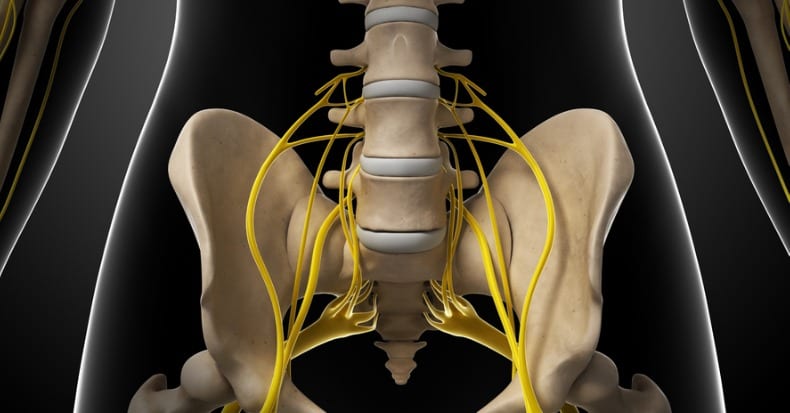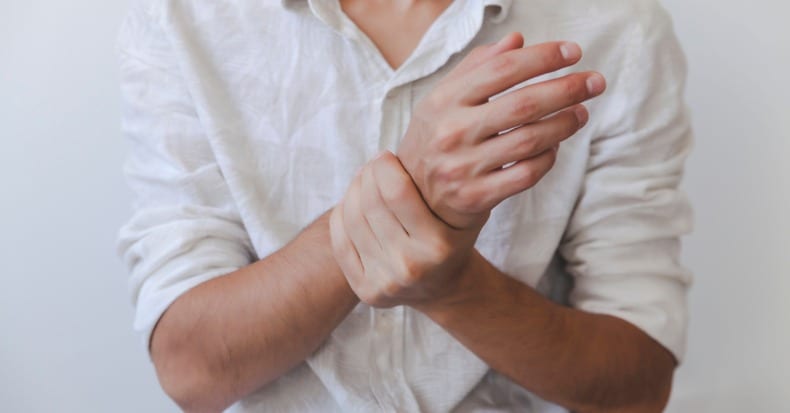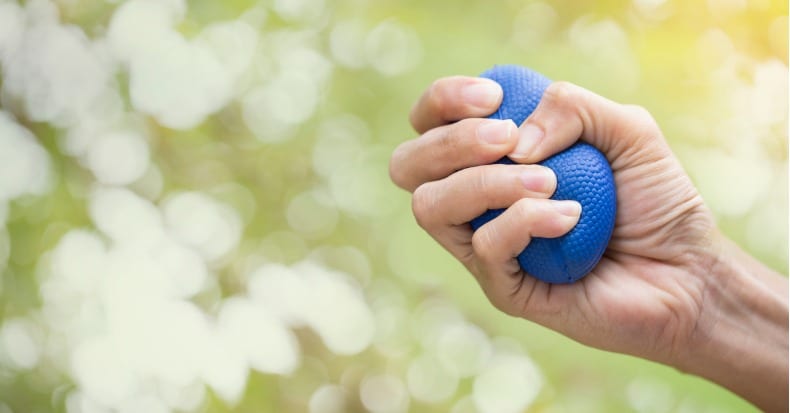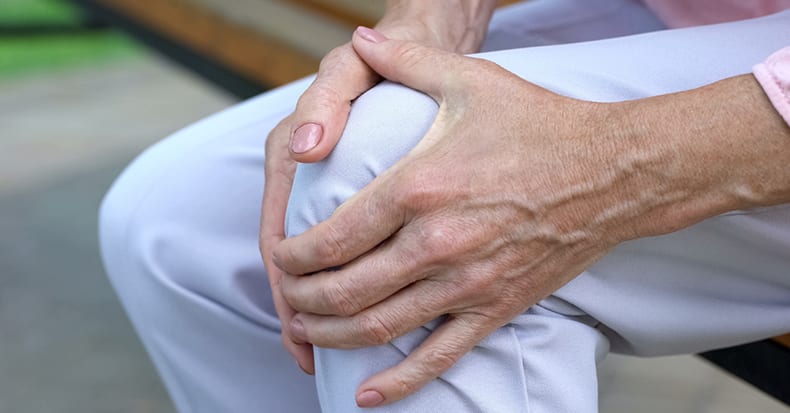Newest Articles
The sciatic nerve is made up of five nerve roots that exit the spine in the lower back (L4 to S3) and then merge into one nerve that travels through the buttock and into the leg. At the back of the knee, the nerve divides into two nerves, the tibial and common peroneal, that travel [..]
In addition to spinal manipulation, doctors of chiropractic often use other conservative therapies to reduce pain and improve function in patients with neck pain. When it comes to neck conditions involving herniated disks, radiating arm pain (“radiculopathy”), strains, facet syndromes or sprains, and myofascial pain, cervical traction is one such option.
As part of the [..]
Carpal tunnel syndrome (CTS) is the most common entrapment neuropathy, or pinched nerve, in the extremities. The condition is estimated to affect 3-6% of the population, often in both hands. Let’s discuss what causes CTS, its symptoms, how it’s diagnosed, and how it’s treated…
Causation: Carpal tunnel syndrome occurs when pressure is placed on the [..]
The shoulder is one of the largest and most complex joints in the body. It’s actually three joints—the AC or acromioclavicular joint (the collar bone/acromion of the shoulder blade joint), the glenohumeral joint (the ball-and-socket joint), and the scapulothoracic joint (the shoulder blade/rib cage “joint”)—all of which involve the scapula to some degree.
The rotator [..]
The cervical spine relies heavily on muscular support, particularly from the deep muscles in the front and back of the neck. Some experts estimate that up to 70% of the stability of the cervical spine arises from these deep neck muscles, particularly those in front of the spine. Studies have demonstrated that the rapid acceleration-deceleration [..]
Alzheimer’s disease (AD) is the #1 cause of dementia, representing an imminent threat to our senior population. It is one of mankind’s cruelest afflictions that causes patients lose their memory, personality, and eventually self-care skills. According to the Centers for Disease Control and Prevention (CDC), about 6 million people currently have AD with projections of [..]
In October 2016, a former model died from a stroke, and the media attributed her injury to neck manipulation.
Rebuttals to this manipulation/stroke claim were a combination of both offense and defense. An edited version of one such rebuttal is presented here:
Earlier this year the British Medical Journal published a study noting that medical [..]
Chiropractors are primary health care providers. This means that patients who seek chiropractic care do not need a referral from another health care provider. Patients may self-refer themselves for chiropractic assessment and treatment.
The large majority (93%) of patients who initially present themselves for chiropractic care do so for the complaints of spinal pain (1). [..]
In the past, patients may have been prescribed bed rest by their family doctor for low back pain. These days, treatment guidelines recommend staying active during the recovery process. Why the change?
There are two types of muscles in the back: the superficial muscles and the deep muscles. The superficial muscles are used to perform [..]
It’s not hard to argue that nearly everyone spends too much time on their electronic devices, especially smartphones. You may be familiar with the terms “text neck” or “forward head posture”, but have you heard that excessive cellphone use may cause your body to grow horns?
If you reach around to the back of your [..]
There are many conditions that affect the hand and wrist: tendonitis (strains), ligament injuries (sprains), as well as carpal tunnel syndrome (CTS). A contributing factor for these conditions is inflammation caused by overuse and repetitive motions. That’s why your doctor of chiropractic recommend taking mini-breaks (30 seconds to one minute) throughout a busy workday to [..]
In the face of musculoskeletal pain, it’s common to restrict activity. Unfortunately, doing so can weaken the muscles and joints in the affected area, which can prolong pain and elevate the risk for future injury. Patients with osteoarthritis of the knee often fall into this trap. So, what type of exercises are best for improving [..]















